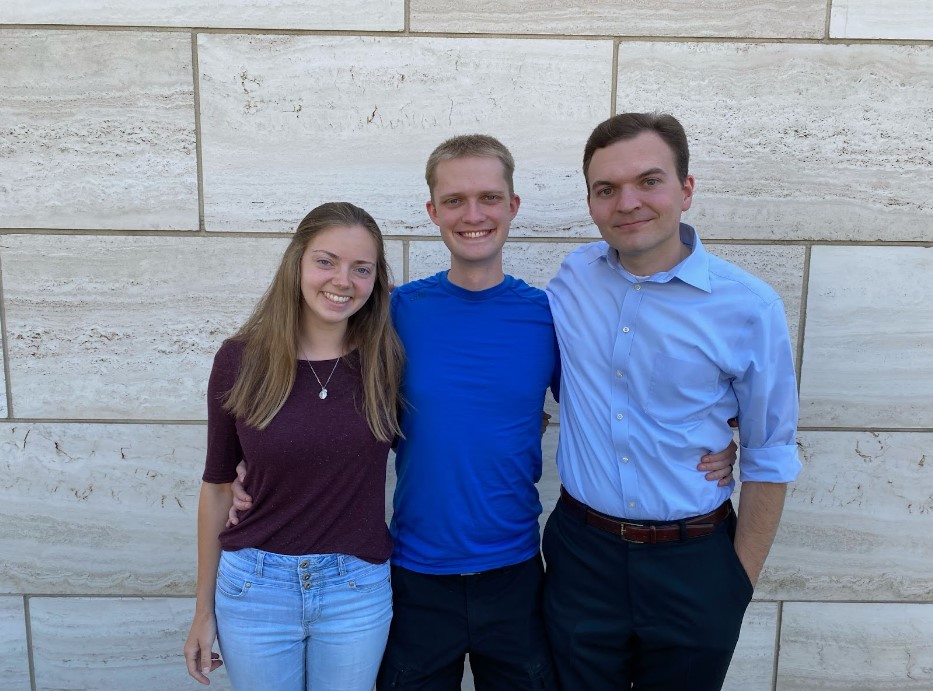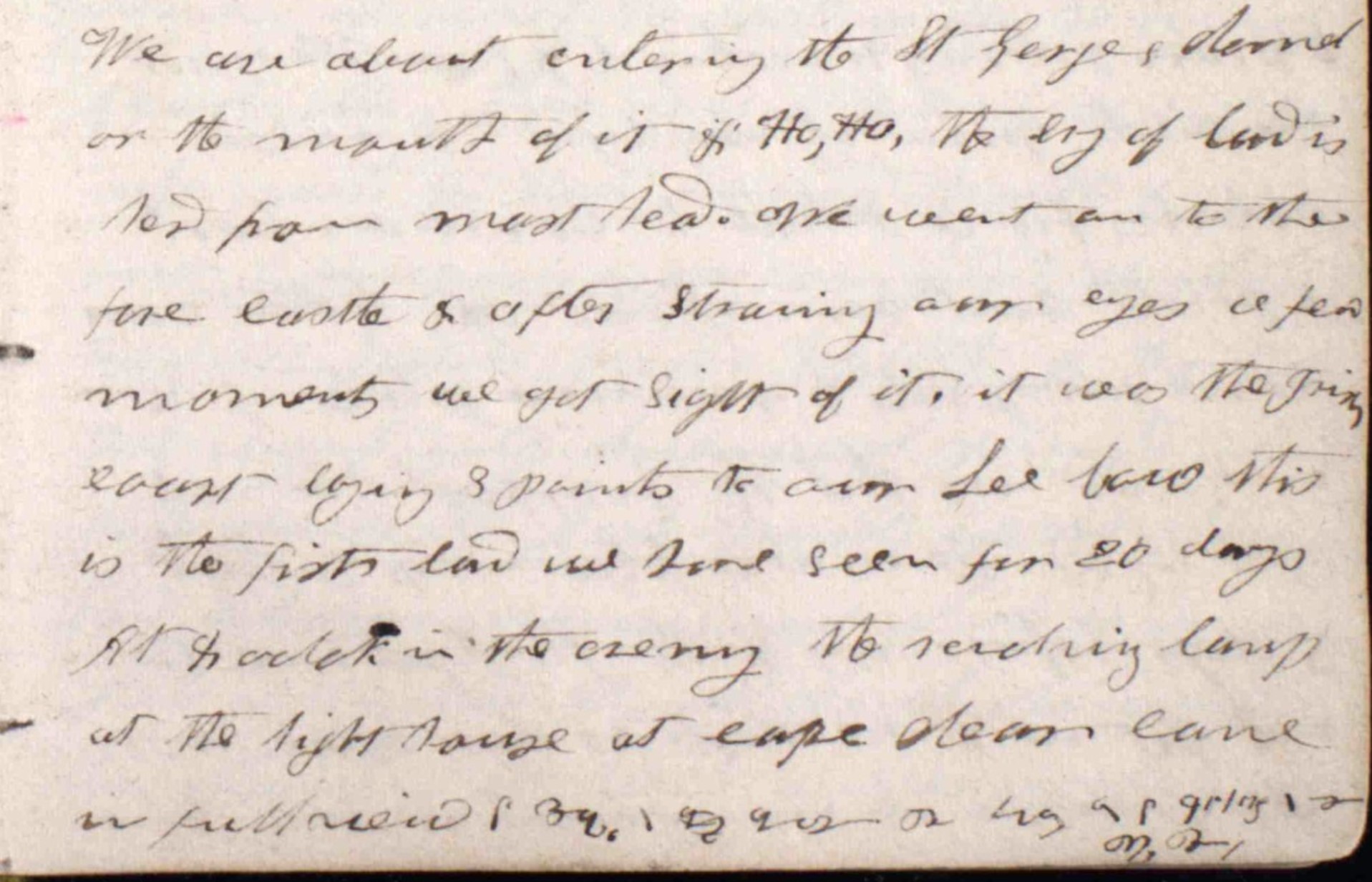Decoding a Prophet
by Connor Olvera
“We’re working on something that, to my knowledge, hasn’t been done before,” BYU student Bryce Lunceford revealed.
Bryce is part of a four student team at Brigham Young University working with the Wilford Woodruff Papers Foundation. The team members, Bryce Lunceford, Amber Oldroyd, Paul Smith, and Nathan Christiansen, are all part of the Applied and Computational Math (ACME) program at BYU.

The Foundation began the Wilford Woodruff Papers Project in 2020 and its mission is simple: transcribe every document Wilford Woodruff wrote that can be found and digitized and make them universally accessible at wilfordwoodruffpapers.org. However, the process of accomplishing this feat is not simple. Wilford Woodruff recorded his eyewitness account of the Restoration of the gospel in his journal and other documents using not only English written in longhand, but also two varieties of shorthand, the Deseret Alphabet, sporadic Latin and Greek, and more than 3,000 unique symbols. The skill required to determine whether a curve and dot on a page is a cursive letter, a shorthand mark, or a symbol is mind-boggling. To accurately transcribe and verify the tens of thousands of documents Wilford Woodruff recorded and preserved between 1828 and 1898 will take thousands of hours and require millions of dollars.

That’s where the ACME students at BYU factor in. Beginning in January of 2022, the ACME team began analyzing the possibility of using artificial intelligence to help decode Wilford Woodruff’s writings. The ultimate goal is to employ computers to assist those transcribing his writings in order to complete the historical project within ten years. The current transcription process requires one person to manually type each word on each page of each document as they read the handwritten version, then a team of two people work together to reread each handwritten word and check the first person’s transcription.
The ACME team is working on an algorithm to teach computers to differentiate the marks on the page and learn to recognize kernels of handwritten text in the historical documents. OCR, or optical character recognition, a commonly used process of converting typed or handwritten documents into text, can recognize distinct characters, but cannot interpret cursive or symbols. The ACME team is using images of Wilford Woodruff’s documents to train the computer as it repeatedly reads the unique text and symbols. The team then analyzes how the computer is performing and makes small changes to incrementally improve its efficiency.
Bryce Lunceford explained, “We watch the network as it’s training and something called the lost function basically tells us how good the computer is at doing what we told it to do. As we see the loss go down, that means the computer is getting better.”
Although the process of teaching the computers mandates some trial and error, the team is optimistic. If the team can successfully teach computers to read the handwriting, then the initial part of the transcription process can be automated and more of the human resources can be focused on the verification and remaining steps in order to publish the text in context.
Computers don’t get bored reading the same text over and over in order to improve the recognition skills required and, just like humans, can get better at something through repetition.
Nathan Christiansen explained, “It takes a lot of time to teach volunteers the skills that are needed to transcribe and if the computer can do the things that are currently being done by volunteers then the transcription can be done a lot faster.”
The partnership between the Foundation and the ACME program provides students with an opportunity to develop cutting-edge technology. If handwriting recognition can be improved through the Wilford Woodruff Papers Project then the technology can be applied to other historical papers projects, making the work of these students monumental.
The experience that they’ve gained working on the Project is something that will propel them in their professional lives. However, the students all admitted that working on the Project has done much more than just boost their resumes. The students each talked about how interacting with the documents and learning about Wilford Woodruff has increased their faith in Jesus Christ.
Paul Smith commented on the omniscience of God in providing someone like Wilford Woodruff to record a firsthand account of the events of the ongoing Restoration. Just as God preserved the records that would eventually become the Book of Mormon, God has preserved the records of Wilford Woodruff that include some of Joseph Smith discourses and vital historical and religious information not recorded anywhere else. Another ACME student, Amber Oldroyd, shared that Wilford Woodruff’s record keeping is an inspiration to her. She enjoys keeping a journal and hopes to continue to do so for her posterity to read one day.
The experiences of these students shows that the union of BYU and the Wilford Woodruff Papers Foundation will not only move the work of transcription forward, it has already strengthened the testimonies of those involved. ACME team member Paul Smith said it best: “The inspired words of Wilford Woodruff and all the prophets bring us closer to Jesus Christ because they are the words of Jesus Christ.”
For more information about the Wilford Woodruff Papers Project, please visit wilfordwoodruffpapers.org. To join one of our transcription teams, please contact us through the volunteer portal at https://wilfordwoodruffpapers.org/volunteer.